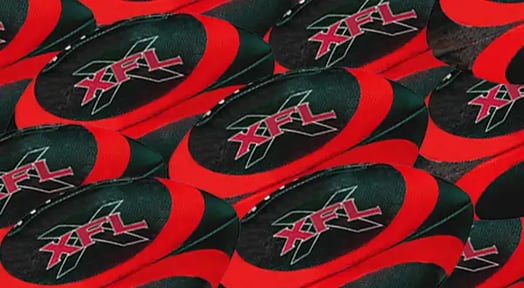The NFL season ended 8 days ago with the Kansas City Chiefs’ win against the San Francisco 49ers in Super Bowl LIV.

But this past weekend, more than 30k committed football fans still found a way to shout themselves hoarse at pro football games.
That’s right: The XFL is back, baybeeee
On Saturday, the DC Defenders beat the Seattle Dragons 31-19 in front of 17k people in Washington, and the Houston Roughnecks beat the Los Angeles Wildcats 37-17 in front of a crowd of 17k in Houston (that’s considerably lower than the NFL’s average regular-season attendance of 66k).
This weekend’s games were the first in a 10week regular season that’s planned for the XFL’s 8 teams, which are all owned by the league (unlike independently owned NFL franchises).
The XFL is returning from a long offseason
Vince McMahon, the impresario of hard knocks and owner of World Wrestling Entertainment (WWE), first launched the XFL in 2001 as a partnership between WWF and NBC.
The original XFL featured both WrestleMania-style gimmicks ( staged appearances and cameos from wrestling celebs) and legitimate innovations (football’s first Skycams and in-game mics).
But the league crashed and burned after just 1 season, resulting in losses of $35m apiece for both NBC and WWF.
So, what makes this new XFL different?
Unlike the original XFL, the new XFL is not affiliated with wrestling — and it doesn’t use its promotional elements. (It IS, however, closely tied with gambling companies FanDuel and DraftKings.)
And, unlike the NFL, the new XFL has slightly different rules designed to reduce controversies off the field (political gestures are “discouraged”) and make game play simpler (there is a running clock).
The XFL hopes to capitalize on football fans’ desire for more action by allowing multiple forward passes and touchdowns worth 7, 8, and 9 points. But, as the low early attendance suggests, the league still faces an uphill battle to compete against the dominant NFL.
After all, the XFL is far from the only NFL knockoff
The amount of money generated by the NFL (which was more than $16B in 2018 and is expected to reach $25B by 2027) has inspired several competing pro football leagues.
Many of them have flamed out quickly:
- The AAF (Alliance of American Football) launched in 2019 and didn’t even make it through a season despite venture backing.
- The USFL (United States Football League) launched in 1983 and lasted for 3 seasons (and lost $163m) before going under.
- The WFL (World Football League) launched in 1973 and made it through 1.5 seasons.

